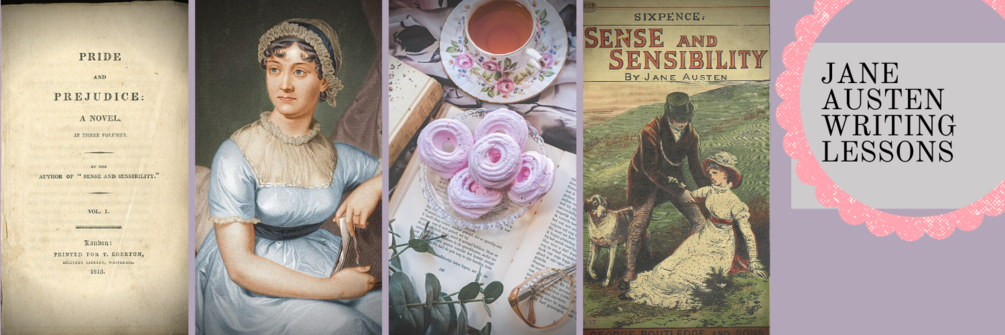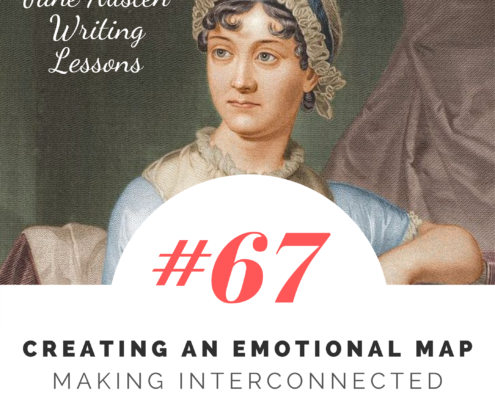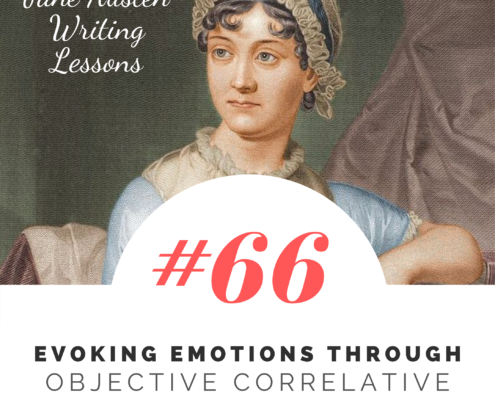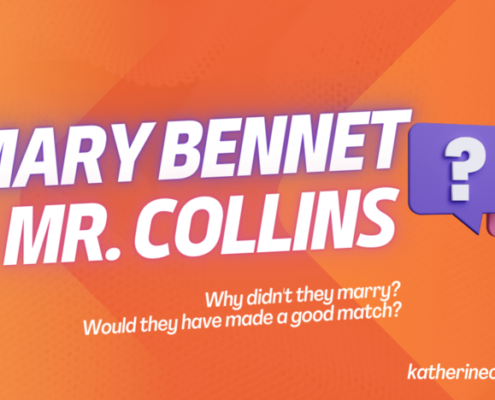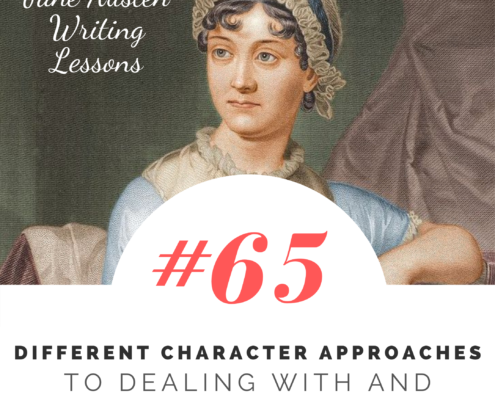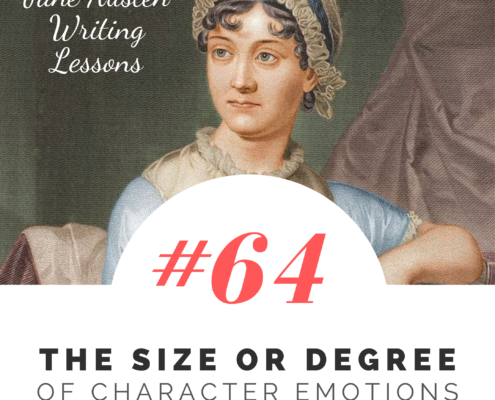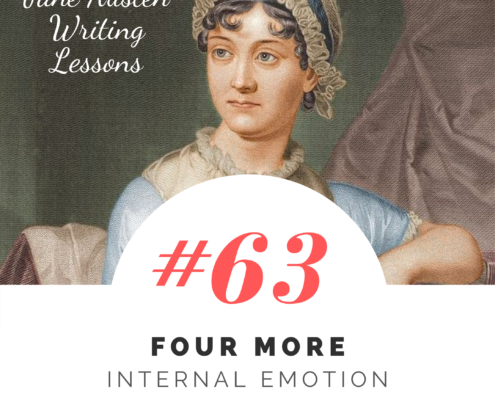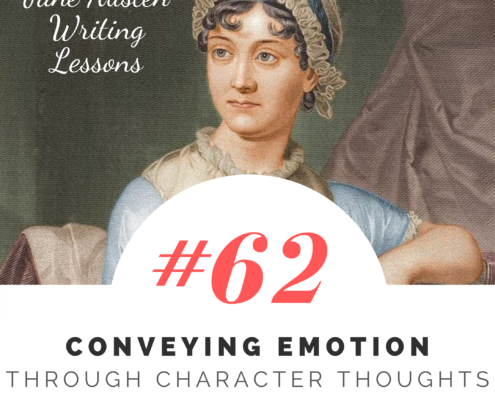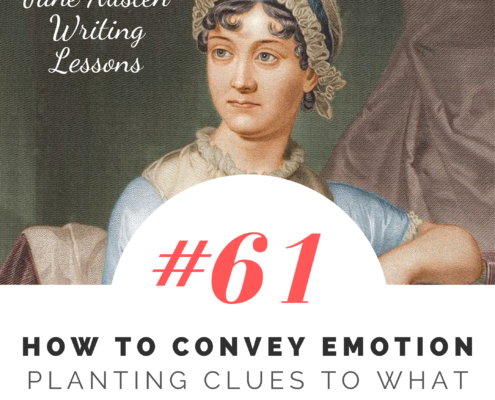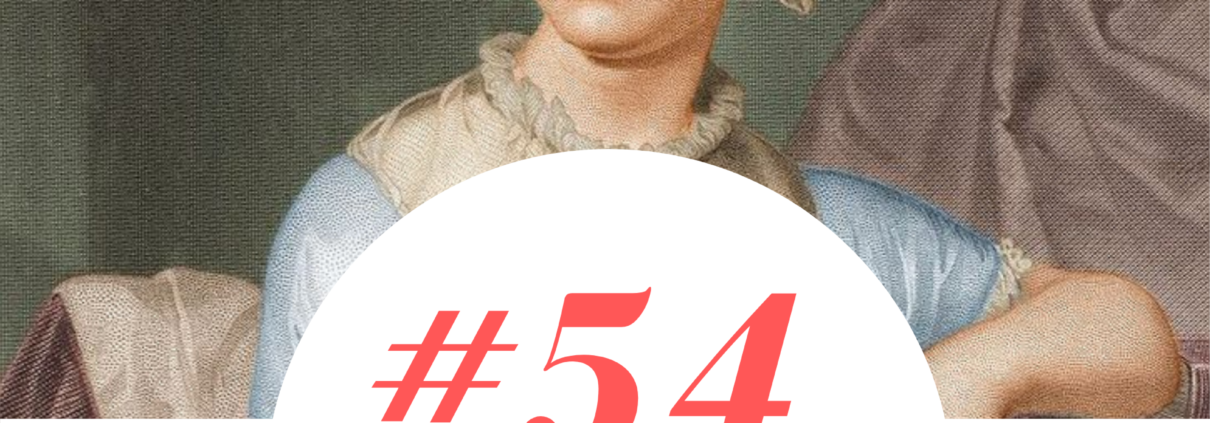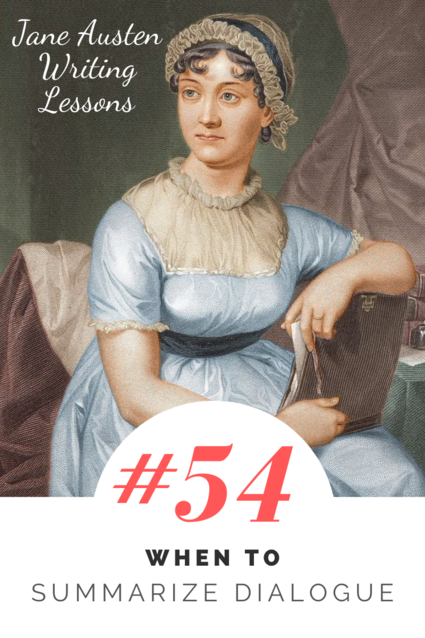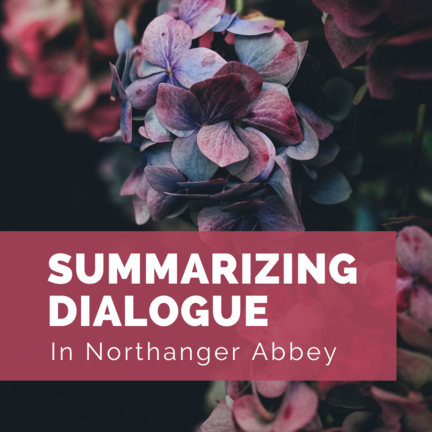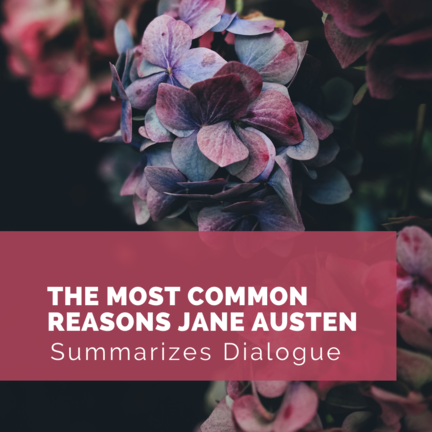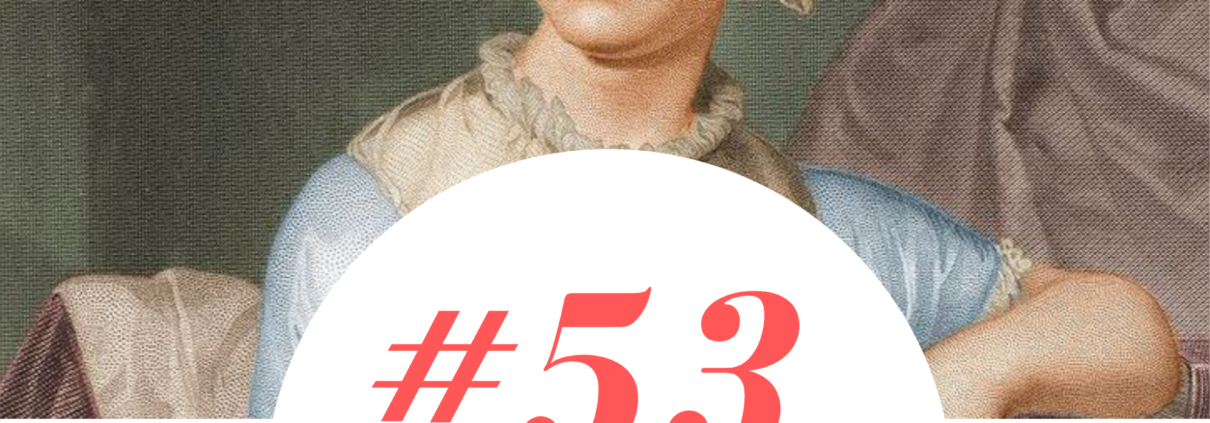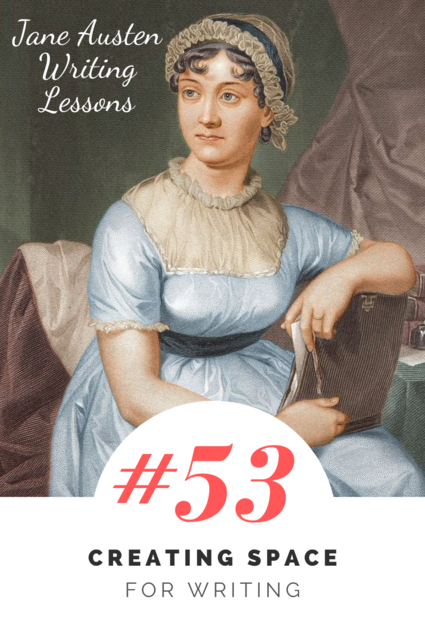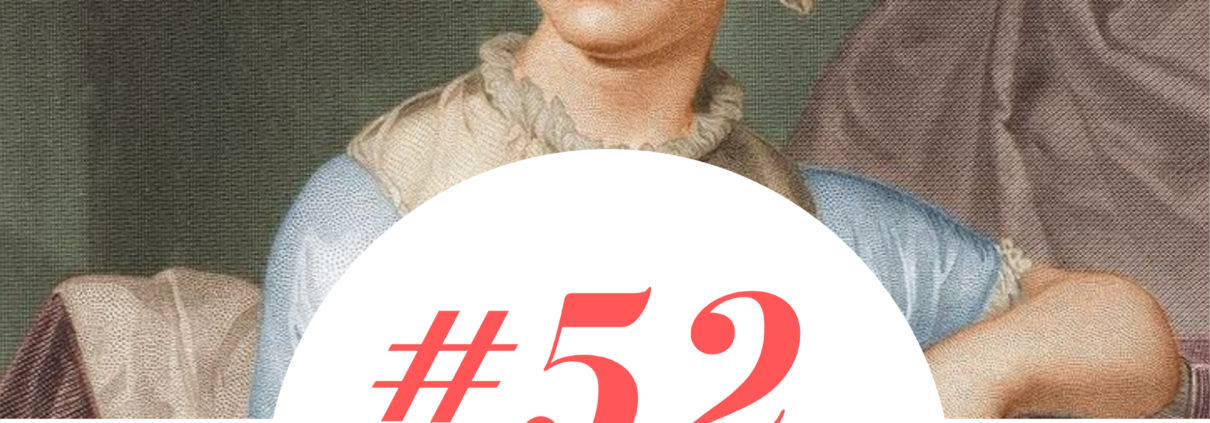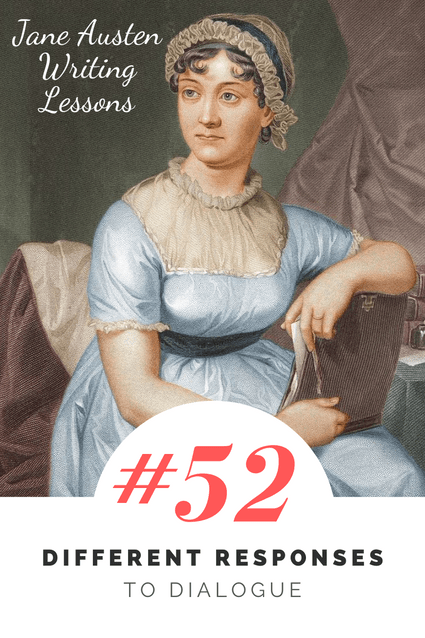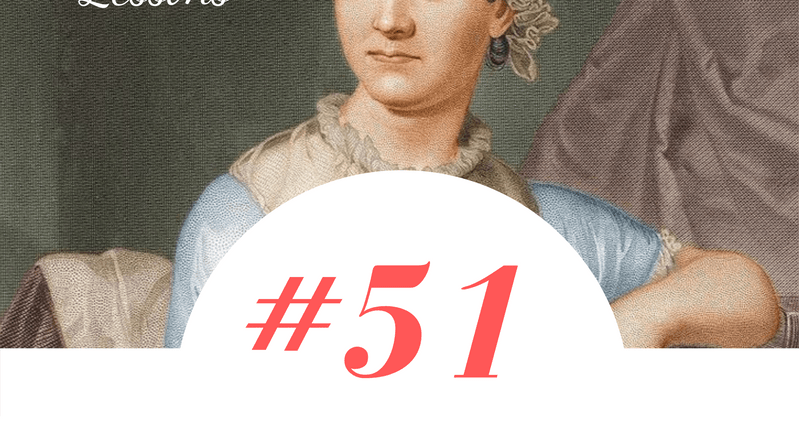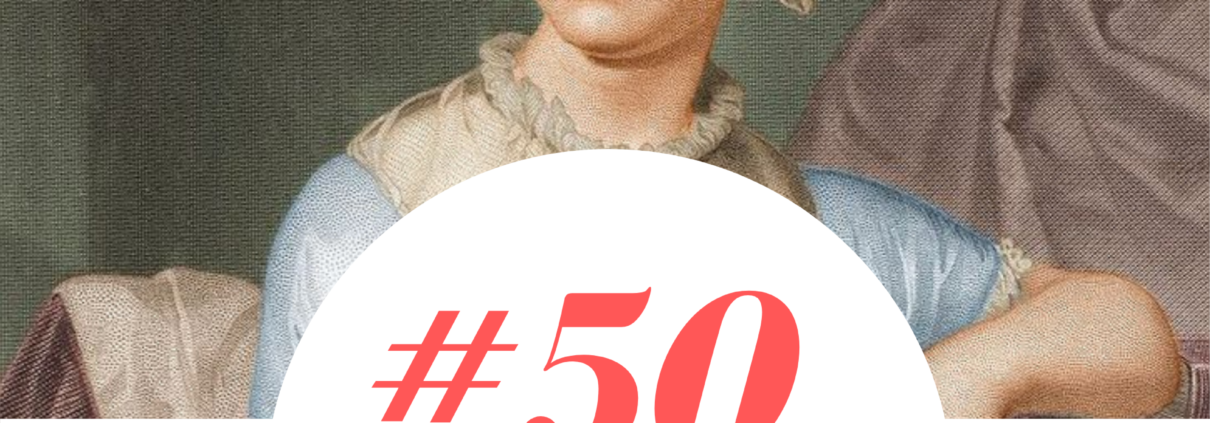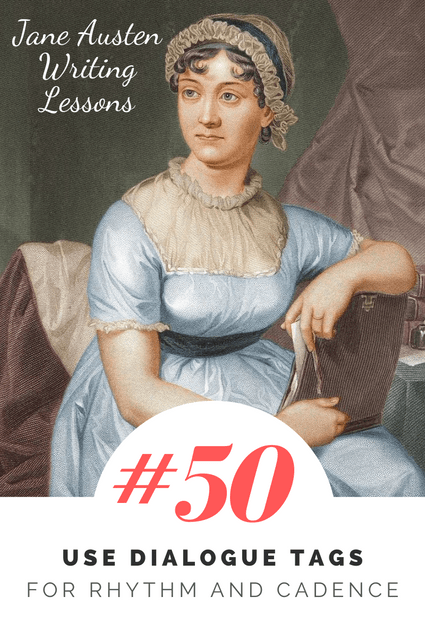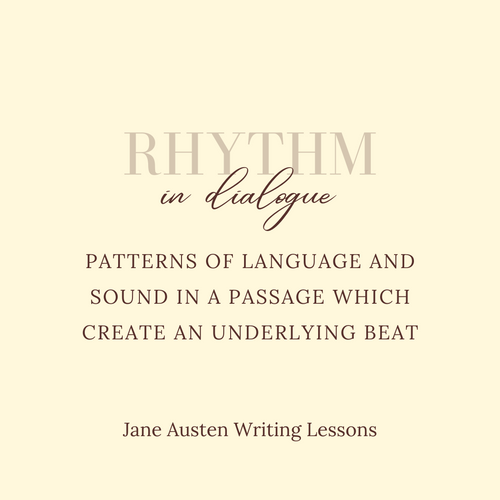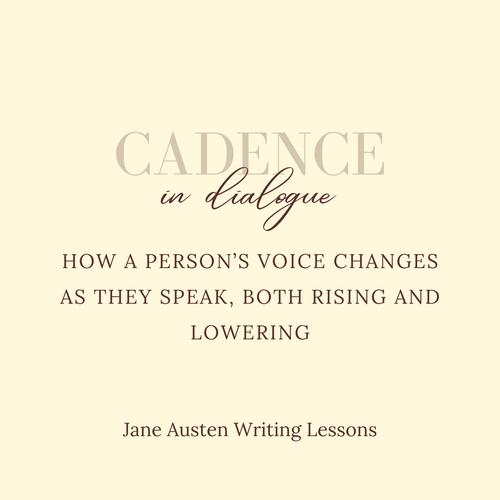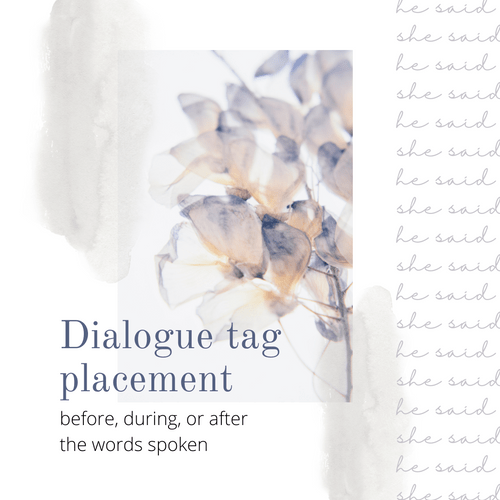One approach that Austen particularly seems to favor is providing the tag partway through the dialogue. This allows a build-up before the dialogue tag—we’re interested in what is being said. Then we are given a physical pause or beat that also serves to provide who is speaking and sometimes how they are speaking or what they are doing. This is followed by more dialogue, which completes the character’s self-expression.
Instead of placing the dialogue tag in the middle of the paragraph, Austen could have written:
As they walked back to the ballroom, Mr. Tilney said, “What are you thinking of so earnestly? Not of your partner, I hope, for by that shake of the head, your meditations are not satisfactory.”
This eliminates the pause after his question—he immediately says the next statement. It also eliminates some of the implied cadence—modulation of his tone—in his question.
The dialogue tag could also have been placed at the end:
“What are you thinking of so earnestly? Not of your partner, I hope, for by that shake of the head, your meditations are not satisfactory,” said Mr. Tilney as they walked back to the ballroom.
Often, a dialogue tag at the end works best for shorter pieces of dialogue—we don’t want to read five or six sentences of dialogue, and then find out who is speaking. This dialogue is of a length that works well with the tag at the end, but it has a different rhythm than what Austen has chosen:
“What are you thinking of so earnestly?” said he, as they walked back to the ball-room;—“not of your partner, I hope, for by that shake of the head, your meditations are not satisfactory.”
Now consider the placement of the dialogue tag in Catherine’s response:
Catherine coloured, and said, “I was not thinking of any thing.”
In part, placing it at the start is necessary, because Catherine blushes as an immediate response to his statement, and then she speaks. However, placing it at the start also impacts how we understand her tone and her volume—we assume she is embarrassed, and likely speaking more quietly, and more quickly, than earlier.
Unnecessary (Yet Rhythmically Appropriate) Dialogue Tags
Another technique that Austen uses is to incorporate dialogue tags that, strictly speaking, are unnecessary—we already know who is speaking, and the dialogue tag doesn’t provide information about the function of the dialogue, how the dialogue is spoken, what emotion is used, etc. Yet these “unnecessary” dialogue tags are used to impact either the rhythm, the cadence, or both.
Later in Northanger Abbey, John Thorpe decides to take Catherine Morland’s future into his own hands. He knows that Catherine has plans to do something with the Tilneys, but he wants Catherine to do something with him, so he goes to the Tilney’s and cancels Catherine’s engagement. He then informs Catherine that she is now available to do something with him:
“Now, my sweet Catherine, all our distresses are over; you are honourably acquitted, and we shall have a most delightful party.”
“This will not do,” said Catherine; “I cannot submit to this. I must run after Miss Tilney directly and set her right.”
The phrase said Catherine is unnecessary—it is clear that Catherine is speaking, and she just been directly addressed by Mr. Thorpe, so readers will assume that the next dialogue is Catherine’s. And, as discussed in the previous lesson on dialogue tags, Austen often omits dialogue tags in cases like this when it is clear who is speaking.
Yet including the dialogue effects the rhythm—we feel Catherine’s pause after her statement, which punctuates both “This will not do” and “I cannot submit to this.” It also affects her cadence. When I read this passage aloud, I naturally read “This will do not do” at a standard tone, and then I read “I cannot submit to this” a little higher and faster.
In Conclusion: The Power of Dialogue Tags
Dialogue tags are powerful. They can:
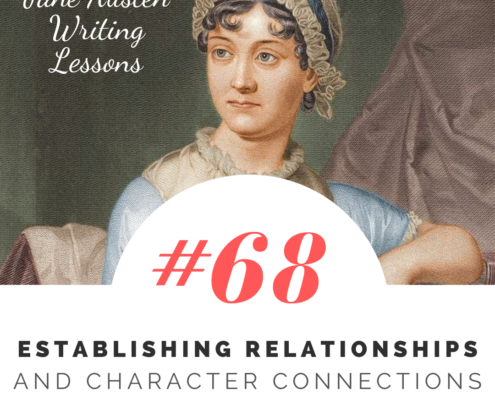 https://www.katherinecowley.com/wp-content/uploads/2023/09/68-Square.png
1080
1080
Katherine Cowley
http://www.katherinecowley.com/wp-content/uploads/2020/01/Katherine-Cowley-Logo-2-1030x589.png
Katherine Cowley2023-09-29 08:47:492023-09-29 08:47:51#68: Establishing Relationships and Character Connections in Fiction
https://www.katherinecowley.com/wp-content/uploads/2023/09/68-Square.png
1080
1080
Katherine Cowley
http://www.katherinecowley.com/wp-content/uploads/2020/01/Katherine-Cowley-Logo-2-1030x589.png
Katherine Cowley2023-09-29 08:47:492023-09-29 08:47:51#68: Establishing Relationships and Character Connections in Fiction https://www.katherinecowley.com/wp-content/uploads/2023/09/68-Square.png
1080
1080
Katherine Cowley
http://www.katherinecowley.com/wp-content/uploads/2020/01/Katherine-Cowley-Logo-2-1030x589.png
Katherine Cowley2023-09-29 08:47:492023-09-29 08:47:51#68: Establishing Relationships and Character Connections in Fiction
https://www.katherinecowley.com/wp-content/uploads/2023/09/68-Square.png
1080
1080
Katherine Cowley
http://www.katherinecowley.com/wp-content/uploads/2020/01/Katherine-Cowley-Logo-2-1030x589.png
Katherine Cowley2023-09-29 08:47:492023-09-29 08:47:51#68: Establishing Relationships and Character Connections in Fiction
